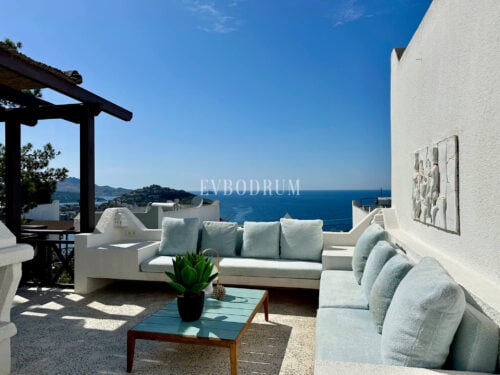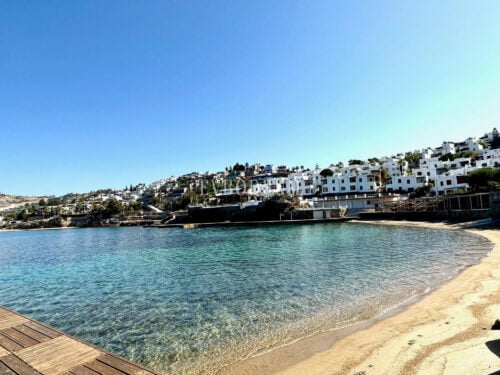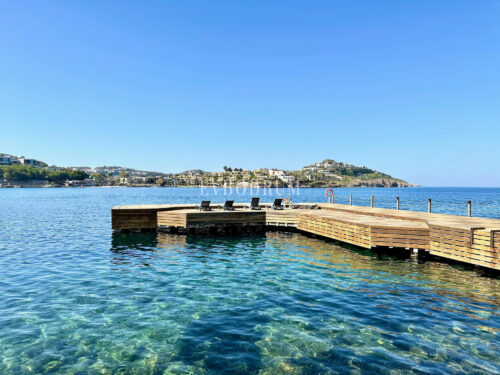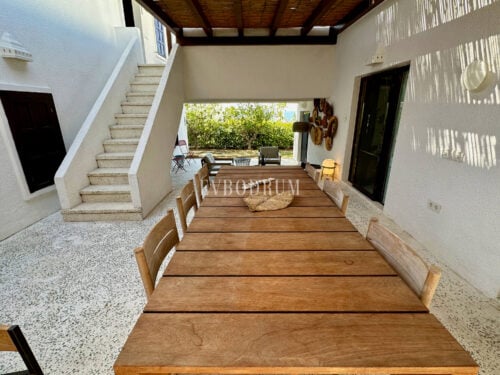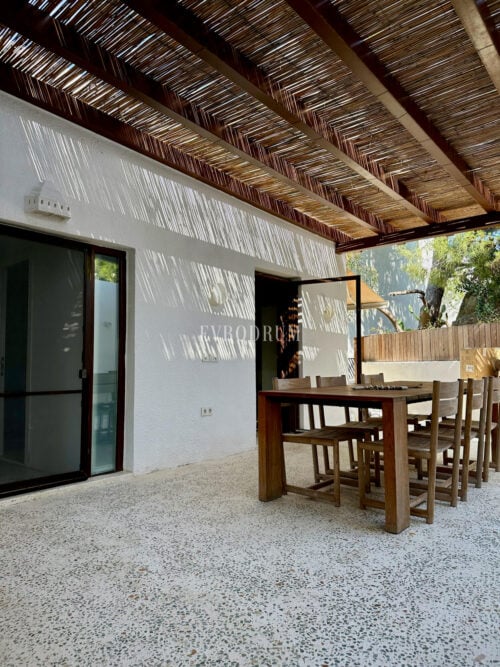Bodrum Peninsula: A Timeless Blend of Ancient Wonders and Modern Luxury
Inspired by CNN Edition and CNN Travel, original content published at https://edition.cnn.com/interactive/2025/travel/bodrum-turkey-peninsula-history-timeline/
Located in southwest Turkey, where the Aegean Sea kisses the coastline, the Bodrum Peninsula is a historical and cultural gem that has been shaped by over 3,000 years of rich heritage. Once known as Halicarnassus, this stunning region has evolved from an ancient center of power to a haven for luxury, but it still retains the charm of its traditional villages and archaeological treasures. Whether you are interested in its classical ruins, its luxurious resorts, or its peaceful, rustic beauty, Bodrum offers a journey through time that is truly unforgettable.
From Ancient Wonder to Luxury Playground: Bodrum’s 3,000-Year Legacy
Bodrum’s appeal lies in its fascinating blend of ancient ruins, charming villages, and world-class luxury. The region has long been celebrated for its natural beauty, historical significance, and vibrant culture. Bodrum was once home to the Mausoleum at Halicarnassus, one of the Seven Wonders of the Ancient World, and its timeless history still reverberates through the region today. But, in recent decades, it has transformed into a luxury destination, attracting high-profile tourists, celebrities, and billionaires from around the world. Despite this, the Bodrum Peninsula maintains a distinct connection to its past, offering visitors a unique opportunity to explore the old alongside the new.
The Playground for the Elite: Bodrum in 2025
In 2025, the Bodrum Peninsula is synonymous with luxury. The area has become a prime destination for the global elite, with ultra-modern resorts, exclusive beach clubs, and luxury yachts dominating the landscape. The northern part of the peninsula, particularly around Göltürkbükü, is famous for its upscale beach clubs, where visitors can indulge in cocktails while enjoying breathtaking views of the Aegean Sea.
Further along the coast, Yalıkavak is home to one of the world’s most luxurious marinas, a favorite gathering place for superyachts. At the same time, Bitez offers more serene, family-friendly beaches with calm, shallow waters. Gündoğan, one of the oldest settlements on the peninsula, has an ancient history dating back to 4 BCE, offering a beautiful mix of culture and charm.
Despite its fame for opulence, Bodrum still retains its rustic allure. For those seeking peace and serenity, the lesser-explored hills and mountains of Bodrum offer a different experience. These areas are far from the bustle of modern developments, and they offer picturesque views, old stone houses, and agricultural terraces that showcase the region’s traditional way of life.
Bodrum’s recent development has brought with it some of the world’s most prestigious hotel brands. The Mandarin Oriental Bodrum, opened in 2014, is a prime example of the region’s luxury offerings. It features sprawling estates with golf carts to help guests navigate the vast grounds. Nearby, Cennet Koyu (“Paradise Bay”) has quickly become one of the most exclusive destinations in Turkey, where luxury resorts and private villas are set against stunning backdrops of untouched nature.
By 2024, Bodrum saw the opening of Scorpios, an elegantly bohemian beach club, along with Maxx Royal, offering a massive 5,750-square-meter spa with 20 treatment rooms. These new developments have cemented Bodrum’s status as a global hotspot for those who seek the finest things in life.
In 2019, Villa Maçakızı, opposite the upcoming Bvlgari Resort set to open in 2027, offered an ultra-exclusive getaway for those willing to pay $50,000 a night. This discreet offering from the Maçakızı Hotel, one of the most iconic and luxurious destinations in Bodrum, provides an intimate and exclusive experience for the ultra-wealthy.
The Birth of Modern Bodrum: The 1990s
The rise of Bodrum as an international tourism destination began in earnest in the 1990s. In 1997, the opening of the Milas-Bodrum Airport marked the region’s entry onto the global stage. The airport replaced the smaller Bodrum-Imsik Airport, allowing international travelers to fly directly to Bodrum. This development helped turn the area into one of Turkey’s most popular tourist destinations, attracting visitors from around the world.
In the late 1980s, the arrival of Turkish pop star Zeki Müren brought additional glamour to the region. Müren, known as the “Turkish Liberace,” retired to Bodrum, and his home remains a museum today. His presence signaled the beginning of Bodrum’s transition from a quiet, sleepy town to a vibrant cultural center.
The 1980s and 1990s saw a major influx of both local and international visitors. The Turkish elite flocked to Bodrum for summer vacations, purchasing villas and holiday homes along the coast. Europeans also found Bodrum’s affordable all-inclusive holidays particularly appealing. British tourists, in particular, were some of the first to arrive in large numbers, aided by the travel agency Intasun. In the early days of tourism, the region lacked large hotels, with many visitors staying in small guesthouses and pensions.
The Bohemian Bodrum: 1960s and 1970s
Before it became a high-end tourism destination, Bodrum was a bohemian paradise. The 1960s and 1970s saw Bodrum attracting artists, musicians, and travelers who were looking to escape the more commercialized aspects of modern life. Many of them were drawn to the free-spirited vibe of the region, where they could live creatively and without the pressures of urban living.
Bodrum’s economy during this time was primarily based on traditional industries, such as sponge diving and citrus farming. The region’s famed tangerines were a primary crop during this period, and sponge diving was one of the most important livelihoods for locals. The town was still relatively isolated, making it a perfect retreat for the creative types who sought an alternative to the city. As Bodrum continued to attract more and more visitors in the 1980s, it began its transformation into the bustling tourism hotspot it is today.
Tradition and Industry: The 1950s to 395 CE
In the mid-20th century, the Bodrum Peninsula was still a peaceful, agricultural area, with people relying on sponge diving, citrus cultivation, and boat building for their livelihoods. The golden age of sponge diving occurred between 1945 and 1965, and the region’s boat-building industry also flourished during this time. These industries, along with Bodrum’s favorable climate and natural resources, were the backbone of its economy for many decades.
In the 1950s and 1960s, the local economy was modest, and many of the peninsula’s residents lived a traditional lifestyle. This period was marked by a close connection to the land, with many families growing their own food and raising livestock.
The Fisherman of Halicarnassus: 1925
In the 1920s, Cevat Şakir Kabaağaçlı, a Turkish writer known as the “Fisherman of Halicarnassus,” was exiled to Bodrum. He fell in love with the area’s natural beauty and rich cultural heritage and became one of the first to introduce Bodrum to a wider audience. Kabaağaçlı is credited with creating the concept of the Blue Cruise, leisure voyages in traditional Turkish gulet boats along the country’s southwestern coastline. His stories brought international attention to Bodrum, and the Blue Cruise remains a popular way to explore the area.
The Tradition of Carpet-Weaving: 1800s and Beyond
The Bodrum Peninsula is also home to rich cultural traditions, such as the centuries-old art of Turkish carpet weaving. In the village of Etrim, visitors can experience the region’s traditional self-sufficient lifestyle and learn about the ancient craft of carpet weaving. Etrim’s highland location, with its Mediterranean climate, has made it an ideal environment for producing distinctive carpets that reflect the local culture and history.
Etrim is also the starting point for the Leleg Way, a 55-mile-long hiking trail that takes visitors past ancient cities, monumental tombs, and scenic landscapes. The Lelegs, one of Bodrum’s earliest known inhabitants, lived in the region from the 15th to the 4th century BCE. The Leleg Way offers a glimpse into the ancient history of the peninsula and is a popular route for those who want to experience the region’s natural beauty and historical sites.
Exploring Ancient Ruins: 129 BCE to 1200 BCE
Bodrum’s rich history is most famously represented by the Mausoleum at Halicarnassus, one of the Seven Wonders of the Ancient World. Built for King Mausolus and his wife Artemisia II in the 4th century BCE, the Mausoleum was nearly 150 feet tall and featured exquisite statues, carvings, and reliefs. Although the structure was destroyed by a series of earthquakes between the 12th and 15th centuries, the remains can still be visited today in downtown Bodrum.
The ruins of Myndos, an ancient city located near the village of Gümüşlük, are another significant archaeological site. Visitors can walk along the “King’s Road” at low tide, which leads from the harbor to Rabbit Island, where more ruins remain hidden. The island itself is closed to the public, but it is an important part of Bodrum’s ancient history.
Conclusion: A Place of Endless Discovery
Bodrum is a place where history and luxury coexist harmoniously. With its ancient ruins, pristine beaches, traditional villages, and world-class resorts, the Bodrum Peninsula offers something for every type of traveler. Whether you’re exploring the ancient wonders of Halicarnassus, cruising the Aegean on a traditional gulet, or relaxing in a luxury villa overlooking the sea, Bodrum offers an experience that is as rich in history as it is in modern indulgence.
As one of Turkey’s most iconic destinations, Bodrum invites you to explore its past, present, and future. With its endless charm and undeniable beauty, the Bodrum Peninsula continues to captivate visitors from around the world, offering a journey through time that is as luxurious as it is unforgettable.
This article draws inspiration from CNN Edition and CNN Travel, and original content can be found at CNN’s Bodrum Travel Timeline.



